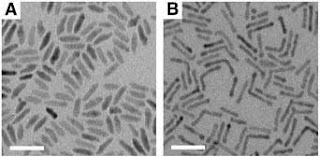Fuel cells combine hydrogen fuel and oxygen from the air to release energy, leaving only water as a waste product. Fuel cells could be an alternative power source for vehicles and other uses, but there are significant challenges to their widespread use. Current fuel cells run at temperatures of 1,500 to 1,800 degrees F (800 to 1,000 degrees C). Just reaching working temperature requires energy, and the heat quickly wears out metal, plastic and ceramic components. Prevailing fuel-cell designs also require an expensive platinum catalyst.
The new technology could allow fuel cells to run at much lower temperatures, 122 to 212 degrees F (50 to 100 degrees C).
Munir, Umberto Anselmi-Tamburini and Sangtae Kim at UC Davis invented a method to make oxides such as cubic zirconia (zirconium oxide) with extremely small grain sizes, on the order of 15 nanometers. A nanometer is one-billionth of a meter, or the size of a few atoms. At that scale, the crystals conduct electricity very well, through the movement of protons. The material could be used in fuel cells that are based on chemical oxides.
Munir was also recipient of the 2007 UC Davis Prize for Undergraduate Teaching and Scholarly Achievement. The prize includes a cash award of $35,000, thought to be the largest of its kind in the nation.
A patent application has been filed for the technology. A paper describing the technique was published in the journal Applied Physics Letters last year. The Nano50 awards will be presented during the National Nano Engineering Conference in Boston, Nov. 14 and 15, 2007.
Additional information: Patent information
Contact: Andy Fell ahfell@ucdavis.edu 530-752-4533 University of California - Davis
Image Credit: Micrographs of (A) CdSe and (B) CdTe nanocrystal rods used to make Berkeley Lab's solution processed all-inorganic solar cells. (Scale bar, 40 nm. ), Technology Transfer Department, E.O. Lawrence Berkeley National Laboratory, MS 90-1070 Berkeley, CA 94720 (510) 486-6467 FAX: (510) 486-6457
Technorati Tags: Nano or Nanotechnology and Nanotech and Nanocrystals or University of California, Davis and Fuel cells or cubic zirconia or Tiny tweezers and yeast help St. Jude show how cancer drug works and Chevrolet Corvette roadster and National Intelligence Estimate 07/17/07 VIDEO















1 comment:
Great stuff... I hope this information proves to be useful.
Post a Comment